Wikipedia:Picture of the day/August 2007
|
Featured picture tools: |
These featured pictures, as scheduled below, appeared as the picture of the day (POTD) on the English Wikipedia's Main Page in August 2007. Individual sections for each day on this page can be linked to with the day number as the anchor name (e.g. [[Wikipedia:Picture of the day/August 2007#1]] for August 1).
You can add an automatically updating POTD template to your user page using {{Pic of the day}} (version with blurb) or {{POTD}} (version without blurb). For instructions on how to make custom POTD layouts, see Wikipedia:Picture of the day.
August 1

|
An animated image showing the territorial evolution of Mexico, showing each change to the internal and external borders of the country. The animation begins with the 1824 Constitution of Mexico and continues to the present-day configuration. Note that many of the borders of states and territories in northern Mexico remain unclear and minor border adjustments with the United States, including the several Rio Grande border disputes, are not shown. Image credit: Golbez
Recently featured:
|
August 2

|
A 1947 fashion photograph taken at Weeki Wachee spring, Florida, by Toni Frissell, who took up fashion photography professionally only after she got fired as a caption writer for Vogue. Even though her work spans the spectrum from society photography to social issues, she is remembered as a fashion photographer and recognized for her stark imagery and as being among the first to take fashion models out of the studio into nature, as this picture at the newly opened Weeki Wachee Springs roadside attraction shows. Photo credit: Toni Frissell
Recently featured:
|
August 3

|
The two Antennae Galaxies (NGC 4038 on the left and NGC 4039 on the right) are a pair of interacting galaxies in the constellation Corvus that are undergoing a galactic collision. They are known as the 'Antennae' because the two long tails of stars, gas, and dust thrown out of the galaxies as a result of the collision resemble the antennae of an insect. The nuclei of the two galaxies are joining to become one supergalaxy. This is likely the future of our Milky Way when it collides with Andromeda. Photo credit: Hubble Space Telescope
Recently featured:
|
August 4

|
Nine Marines from Mike Battery, 4th Battalion, 14th Marines operate the 155mm M198 howitzer in November 2004. The battery was based at Camp Fallujah, Iraq and was supporting Operation Phantom Fury. All nine members of the M198 crew are present. Photo credit: L Cpl. Samantha L. Jones, USMC
Recently featured:
|
August 5

|
|
Panoramic view of the geodesic dome structures of the Eden Project, a large-scale environmental complex near St Austell, Cornwall, England. The project was conceived by Tim Smit and is made out of hundreds of hexagons (transparent biomes made of ETFE cushions) that interconnect the whole construction together. The project took 2½ years to construct and opened to the public in March 2001. Photo credit: Jürgen Matern
Recently featured:
|
August 6

|
A live specimen of an Atlantic Bobtail squid (Sepiola atlantica) from the Belgian continental shelf. The animal was released after the picture was taken. Photo credit: Hans Hillewaert
Recently featured:
|
August 7
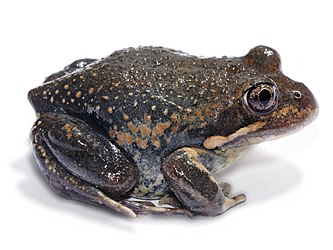
|
The Eastern Banjo Frog (Limnodynastes dumerilli) is native to eastern Australia and has been introduced to New Zealand. The frog is also commonly called the pobblebonk after its distinctive "bonk" call, which is likened to a banjo string being plucked. Adults are roughly seven to eight cm long. Photo credit: Fir0002
Recently featured:
|
August 8

|
A section of the GISP2 ice core (view the entire image) from 1837 meters (6027 feet) deep in which annual layers of ice are clearly visible (38 years are represented in the entire image). The appearance of layers results from differences in the size of snow crystals deposited in winter versus summer and resulting variations in the abundance and size of air bubbles trapped in the ice. Photo credit: National Ice Core Laboratory
Recently featured:
|
August 9

|
Senior American military officials of World War II. Seated are (from left to right) Gens. William H. Simpson, George S. Patton, Carl A. Spaatz, Dwight D. Eisenhower, Omar Bradley, Courtney H. Hodges, and Leonard T. Gerow; standing are (from left to right) Gens. Ralph F. Stearley, Hoyt Vandenberg, Walter Bedell Smith, Otto P. Weyland, and Richard E. Nugent. Photo credit: United States Army
Recently featured:
|
August 10

|
Mont Saint-Michel and its abbey at night. This UNESCO World Heritage Site is a rocky tidal island roughly one kilometre from the north coast of Normandy, France at the mouth of the Couesnon River, near Avranches. Mont Saint-Michel was previously connected to the mainland via a thin natural land bridge, which before modernization was covered at high tide and revealed at low tide. Photo credit: Benh Lieu Song
Recently featured:
|
August 11

|
A Common Jassid leafhopper (Eurymela fenestrata) nymph. This species lives in a symbiotic relationship with meat ants, shown here "milking" the honeydew secretions. Photo credit: Fir0002
Recently featured:
|
August 12

|
Apollo 11 Lunar Module pilot Buzz Aldrin's bootprint. Aldrin photographed his bootprint about an hour into their lunar extra-vehicular activity on August 12, 1969 as part of investigations into the soil mechanics and regolith of the lunar surface. This photo also shows the undisturbed patch of ground before he placed his boot there. Photo credit: Buzz Aldrin
Recently featured:
|
August 13

|
J. Howard Miller's famous poster for Westinghouse, entitled We Can Do It!, is iconically associated with Rosie the Riveter, a cultural icon of the United States. Rosie represented the six million women who worked in the manufacturing plants on the home front which produced munitions and material during World War II while the men (who traditionally performed this work) were fighting in the Pacific and European Theaters. This "character" is now considered a feminist icon in the U.S., and a herald of women's economic power to come. Artist: J. Howard Miller
Recently featured:
|
August 14

|
A clerid beetle of the species Trogodendron fasciculatum, commonly known as the yellow-horned clerid, sits atop a eucalyptus branch in Victoria, Australia. Photo credit: Fir0002
Recently featured:
|
August 15

|
Landing ships putting ashore on Omaha Beach at low tide during the first days of the Invasion of Normandy, mid-June, 1944. Barrage balloons fly overhead and U.S. Army "half-tracks" form a convoy on the beach. The Normandy landing was the largest seaborne invasion in history, with almost three million troops crossing the English Channel. Photo credit: United States Coast Guard
Recently featured:
|
August 16

|
A detail from the 1736 remake of Along the River During Qingming Festival (see the entire painting, which is over 11.5 m / 37.7 ft. wide), a 12th century painting attributed to Zhang Zeduan. The original painting captures the daily life of people from the Song Dynasty at the capital, today's Kaifeng. The remake updates the scenery to include Qing Dynasty motifs and shows the influence of Western painting techniques. Artists: Five court painters under the Qianlong Emperor
Recently featured:
|
August 17

|
Broadway Tower is a folly located near the village of Broadway, Worcestershire, England, at one of the highest points of the Cotswolds. Its base is 1,024 feet (312 m) above sea level, the tower itself standing 55 feet (17 m) tall. On a clear day, thirteen counties of England can be seen from its top.
Recently featured:
|
August 18
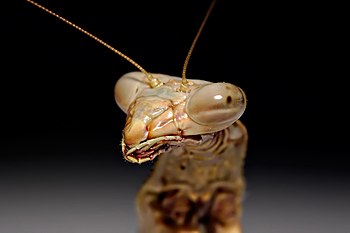
|
An adult large brown mantid (Archimantis latistyla), one of over 2,000 species of praying mantis found throughout Asia, Europe, and North America. Named for their typical "prayer-like" stance, mantids are carnivorous insects that prey on other insects, although larger mantids have been known to consume small reptiles and even small mammals or birds. Photo credit: Fir0002
Recently featured:
|
August 19

|
An animated cubic Bézier curve (see other types), a parametric curve important in computer graphics. Modern computer fonts use Bézier splines composed of quadratic or cubic Bézier curves to create typefaces. Image credit: Phil Tregoning
Recently featured:
|
August 20
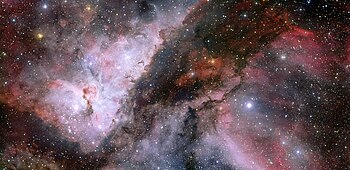
|
The Eta Carinae Nebula is a large bright nebula which surrounds several open star clusters and contains multiple O-type stars. It lies at an estimated distance between 6,500 and 10,000 light years from Earth and is located in the constellation of Carina.
Recently featured:
|
August 21

|
|
The western (front) side of the United States Capitol. The U.S. Capitol serves as the location for Congress, the legislative branch of the U.S. federal government. It is located in Washington, D.C., on top of Capitol Hill at the east end of the National Mall. The building is marked by its central dome above a rotunda and two wings. It is an exemplar of the Neoclassical architecture style. Photo credit: Noclip
Recently featured:
|
August 22

|
The German wasp (Vespula germanica) is a wasp found in much of the Northern Hemisphere, native to Europe, northern Africa, and temperate Asia. It is more commonly known in North America as a yellowjacket. Photo credit: Fir0002
Recently featured:
|
August 23
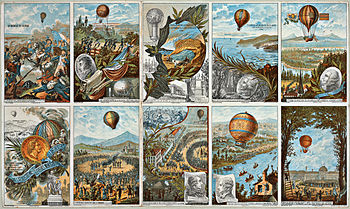
|
Two sets of late 19th century collecting cards (see all cards), depicting historical events in ballooning and parachuting history from 1783 to 1846. The cards show first flights, military accomplishments, triumphs and tragedies, such as the death of Tom Harris in 1824, who sacrificed his life when his balloon lost altitude and threatened to kill Harris and his fiancée. Image credit: Romanet & cie., c. 1890–1900
Recently featured:
|
August 24

|
The front facade of the Royal College of Music in Kensington, London. This prestigious music school was founded in 1882 as a successor to the National Training School for Music by the then-Prince of Wales (later Edward VII). The college building was designed by Sir Arthur Blomfield. Photo credit: Diliff
Recently featured:
|
August 25

|
A topographic map of the Falkland Islands, an archipelago in the South Atlantic Ocean, located 480 km (300 mi) off the coast of Argentina. They consist of two main islands, East Falkland and West Falkland, together with about 700 smaller islands. Stanley, on East Falkland, is the capital and largest city. The islands are a self-governing overseas territory of the United Kingdom. Image credit: Eric Gaba
Recently featured:
|
August 26
|
A c.1866 panorama of Edo consisting of five albumen silver prints joined together. Edo is the former name of the Japanese capital Tokyo, and was the seat of power for the Tokugawa shogunate which ruled Japan from 1603 to 1868. Pictured here are daimyō houses used by feudal lords for the purposes of sankin kōtai. Following the end of the shogunate, they were razed so that government, commercial and industrial buildings could be built in their place. Photo credit: Felice Beato
Recently featured:
|
August 27

|
NGC 2244 as imaged by the Spitzer Space Telescope (SIRT) in infrared, is an open cluster of stars inside the Rosette Nebula. These super hot stars generate high velocity winds, which cause the gas to be pushed outwards (green clouds). Photo credit: Spitzer Space Telescope
Recently featured:
|
August 28
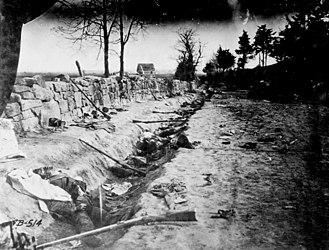
|
Confederate dead behind the stone wall of Marye's Heights, Fredericksburg, Virginia, killed during the Battle of Chancellorsville, May 1863. The battle pitted the Union Army of the Potomac against a force half its size, the Army of Northern Virginia. Despite the odds, Robert E. Lee's tactics ensured a Union defeat. Photo credit: Andrew J. Russell
Recently featured:
|
August 29

|
|
Bryce Canyon in the U.S. state of Utah, seen here from Bryce Point. Despite its name, this is not actually a canyon, but rather a giant natural amphitheater. Bryce is distinctive due to its unique geological structures, called "hoodoos", formed from wind, water, and ice erosion of the river and lakebed sedimentary rocks. Photo credit: Jonathan Zander
Recently featured:
|
August 30

|
An animated image demonstrating the usage of a sextant, a measuring instrument generally used to measure the angle of elevation of a celestial object above the horizon. A common use of the sextant is to sight the sun at noon to find one's latitude. Image credit: Joaquim Alves Gaspar
Recently featured:
|
August 31

|
Sparrenburg Castle, located in Bielefeld, Germany, as seen from the western lawn. The castle was constructed between 1240 and 1250 by the Counts of Ravensberg. The castle has been rebuilt many times. Although often under siege, it was never stormed. After extensive restoration work, the castle now presents itself as an imposing historic site. Photo credit: Daniel Schwen
Recently featured:
|
Picture of the day archives and future dates

